Nutrition Tips for Low-Activity Pets
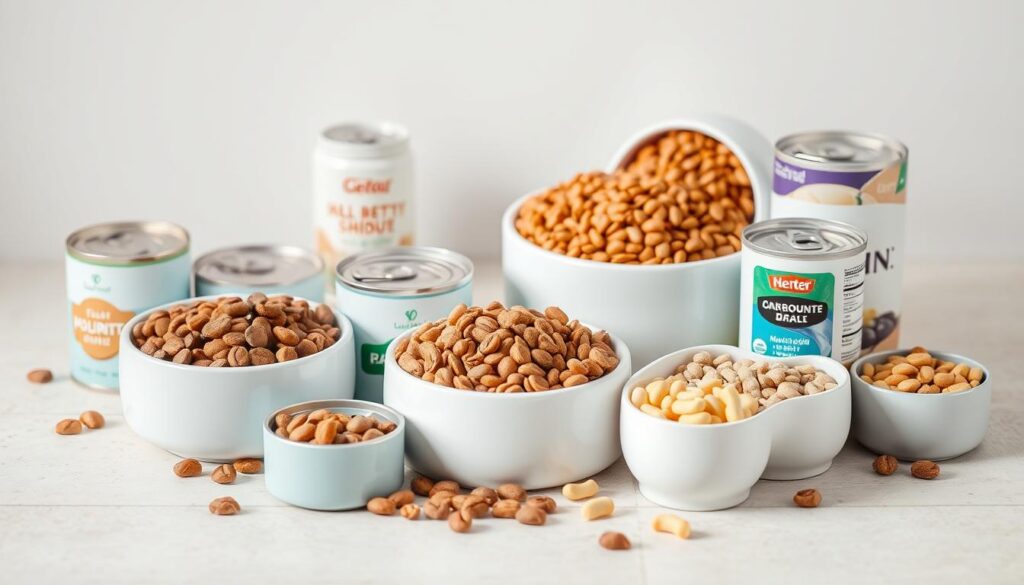
As a pet owner, you want the best for your furry friend, especially when it comes to their health and nutrition. Research shows that many pet owners overlook the importance of snacks and treats in their pets' nutritional intake. This can lead to an imbalance, causing excessive caloric intake and potentially resulting in obesity or nutritional deficiencies.
Proper nutrition is crucial for pets with limited activity, and it's essential to understand their unique energy needs and requirements. In this guide, we'll explore how to prevent common health issues related to overfeeding and ensure your dog or pet gets the right balance of food and nutrition.
By the end of this guide, you'll be equipped with the knowledge to make informed decisions about your pet's dietary needs and maintain their optimal weight and health.
Understanding the Nutritional Needs of Inactive Pets
Understanding the nutritional needs of inactive pets is crucial for their overall health. As pets age or become less active, their energy requirements decrease, but their need for essential nutrients remains. If you're a pet owner, it's vital to adjust your pet's diet accordingly to prevent obesity and other health issues.
How Activity Level Affects Dietary Requirements
The activity level of your pet significantly impacts their dietary needs. For instance, a dog that is less active requires fewer calories, but still needs a balanced food intake to maintain optimal weight. Studies have shown that excessive consumption of treats can lead to an imbalanced diet and contribute to various health issues.
To illustrate how activity level affects dietary requirements, consider the following table:
| Activity Level | Caloric Needs | Nutritional Requirements |
|---|---|---|
| High | High caloric intake | Balanced nutrients |
| Low | Lower caloric intake | Essential nutrients |
The Risks of Overfeeding Low-Activity Pets
Overfeeding your inactive pet can lead to serious health consequences, including obesity, diabetes, and joint problems. Excess weight puts additional strain on your pet's limited mobility, creating a dangerous cycle. It's essential to monitor your pet's food intake and adjust their diet as needed to maintain a healthy weight and prevent related health issues.
"The key to maintaining your pet's health is understanding their nutritional needs and adjusting their diet accordingly."
By being mindful of your pet's activity level and adjusting their diet accordingly, you can help prevent health issues and ensure they lead a long, healthy life.
Essential Nutrients for All Pets Regardless of Activity Level
Regardless of how active your pet is, there are certain essential nutrients that their diet must include to maintain optimal health. Understanding these nutrients is crucial for providing your pet with a balanced diet that supports their overall well-being.
The Six Core Nutrients Every Pet Needs
Pets require six core nutrients: water, protein, fat, carbohydrates, vitamins, and minerals. Water is vital for hydration and should always be available. Protein is necessary for building and repairing tissues, while fat provides energy and supports skin and coat health. Carbohydrates serve as an energy source, and vitamins and minerals are crucial for various bodily functions, including immune response and bone health.
For instance, data shows that inactive cats on certain diets may not receive enough crude protein, particularly those with dry snacks (36.29%), wet snacks (16.12%), and liquid snacks (2.41%). Similarly, fat content can be inadequate in 29.03% of diets with dry snacks, 28.22% with wet snacks, and 44.77% with liquid snacks.
How Nutrient Requirements Change with Decreased Activity
When your pet's activity level decreases, their energy requirements decrease, but their need for certain nutrients may remain the same or even increase. For example, protein quality becomes more important to prevent muscle loss. The balance of macronutrients shifts, and certain nutrients may need to be supplemented or adjusted to compensate for metabolic changes associated with a low-activity lifestyle.
It's essential to adjust your pet's diet accordingly to ensure they receive the necessary nutrients for optimal health. This might involve choosing a diet specifically formulated for inactive pets or consulting with a veterinarian to determine the best nutritional plan.
Protein Requirements for Sedentary Pets
Protein is a vital nutrient for inactive pets, and its requirements can vary between dogs and cats. As pets become less active, their dietary needs change, and it's essential to understand these changes to provide the right nutrition.
For sedentary pets, the quality and quantity of protein are crucial. Dogs and cats have different protein requirements due to their unique physiological characteristics.
Optimal Protein Levels for Inactive Dogs
Inactive dogs require a balanced diet that includes an optimal level of protein. While their energy needs may decrease, their protein requirements remain relatively stable. However, the source and quality of protein are important factors. High-quality protein sources, such as chicken, beef, or fish, provide essential amino acids necessary for maintaining muscle mass and overall health.
| Protein Source | Amino Acids Provided | Quality Rating |
|---|---|---|
| Chicken | All essential amino acids | High |
| Beef | All essential amino acids | High |
| Fish | All essential amino acids | High |
Protein Needs for Indoor and Less Active Cats
Indoor and less active cats have higher protein requirements compared to dogs due to their nature as obligate carnivores. They require specific amino acids like taurine, which must come from animal protein sources. A deficiency in protein can lead to muscle wasting and other health issues. When selecting a diet for your indoor cat, it's crucial to evaluate the protein content and ensure it meets their nutritional requirements.
- Cats need high-quality protein from animal sources.
- Taurine is an essential amino acid for feline health.
- Protein deficiency can lead to serious health problems.
By understanding the protein needs of your sedentary pet, you can make informed decisions about their diet and ensure they lead a healthy life.
Managing Fat Content in Diet for Inactive Pets
The right balance of fat in a pet's diet is essential, especially for those with low activity levels. Dietary fat is a crucial component of a pet's nutrition, providing energy and supporting various bodily functions.
The Role of Dietary Fat in Pet Health
Dietary fat plays a vital role in maintaining your pet's overall health. It serves as a concentrated source of energy, helping to fuel your pet's daily activities, even if they're not highly active. Fats, particularly omega-3 and omega-6 fatty acids, are essential for maintaining healthy skin, coat, and supporting various bodily functions. The AAFCO minimum levels for fat in dog foods are 8.5% DM for growth and reproduction and 5.5% for adult maintenance.
Deficiencies in these essential fats can lead to issues such as decreased wound healing, a dull and dry hair coat, and increased dermatological conditions. On the other hand, high-fat diets can increase the risk of obesity, a significant health concern for inactive pets.
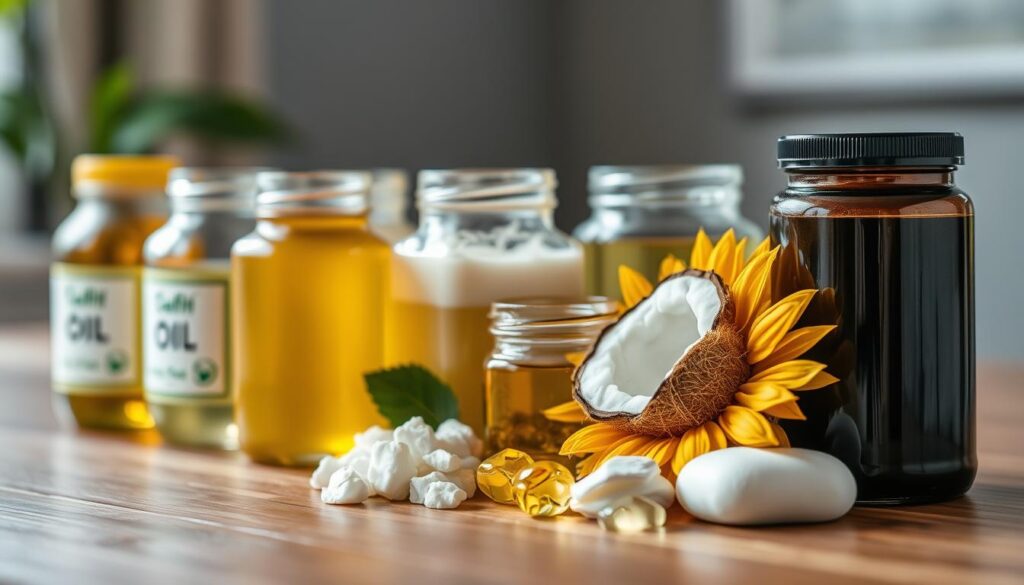
Adjusting Fat Intake for Weight Management
To manage your inactive pet's weight effectively, it's crucial to adjust their fat intake appropriately. This involves understanding the difference between healthy fats that should be preserved in the diet and excessive fats that can be reduced. Calculating the optimal fat percentage based on your pet's specific energy needs and health status is key.
| Pet Status | Recommended Fat Percentage | Considerations |
|---|---|---|
| Growth and Reproduction | 8.5% DM | Higher energy needs |
| Adult Maintenance | 5.5% DM | Lower energy needs for inactive pets |
Gradual adjustments to fat intake, rather than drastic reductions, can help maintain your pet's health while supporting weight management goals. It's also important to read pet food labels carefully to identify hidden sources of fat that may contribute to weight gain.
Carbohydrates and Fiber: Finding the Right Balance
Finding the right balance of carbohydrates and fiber is essential for the well-being of inactive pets. As a pet owner, understanding the role of these nutrients can significantly impact your dog's health, particularly if they lead a sedentary lifestyle.
Types of Carbohydrates in Pet Food
Carbohydrates in pet food come in various forms, with fiber being a crucial component. Fiber is vital for maintaining normal gastrointestinal function in dogs. It aids in keeping the colon healthy and supports the gut microbiome. There are two main types of fiber: soluble and insoluble. Soluble fiber retains water, making a dog's feces softer, while insoluble fiber increases fecal bulk but doesn't soften it. Understanding the difference between these types is essential for providing the right diet for your inactive pet.
How Fiber Benefits Low-Activity Pets
Fiber becomes especially important in diets for inactive pets as it promotes satiety and prevents overeating. It also helps regulate blood sugar levels, which is beneficial for overweight or diabetic pets. Moreover, the right amount of fiber can prevent constipation, a common issue in sedentary pets. Prebiotic fibers support gut microbiome health, influencing overall immunity and well-being. By incorporating the right balance of fiber into your pet's diet, you can significantly enhance their digestive health and overall quality of life.
Vitamins and Minerals: Supplementation Considerations
For pets with reduced activity levels, understanding the role of vitamins and minerals is crucial for maintaining optimal health. As pets age or become less active, their dietary needs change, and ensuring they receive the right balance of these essential nutrients becomes vital.
Essential Vitamins for Inactive Pets
Vitamins play a critical role in your pet's overall well-being, supporting various bodily functions from energy production to immune response. Inactive pets require a balanced intake of vitamins to prevent deficiencies that could exacerbate health issues. Key vitamins include Vitamin D for bone health, Vitamin E for antioxidant functions, and B vitamins for metabolic processes.
- Vitamin D supports bone health and calcium absorption.
- Vitamin E acts as an antioxidant, protecting cells from damage.
- B vitamins are crucial for energy production and metabolic health.
Mineral Requirements and Potential Deficiencies
Minerals are equally important for your dog's health, contributing to structural components, nerve function, and fluid balance. There are two categories: macro-minerals and trace minerals. Macro-minerals like calcium, phosphorus, and magnesium are needed in larger quantities, while trace minerals such as zinc, iron, and selenium are required in smaller amounts but are no less critical.
Common deficiencies can occur if the diet is not well-balanced, potentially leading to health issues. For instance, inadequate calcium and phosphorus can affect bone health, while insufficient iron can lead to anemia. Ensuring the right balance is key to preventing these deficiencies and maintaining your pet's health.
Calculating Proper Portion Sizes for Inactive Pets
Determining the ideal food intake for your inactive pet is crucial for maintaining their overall health. Inactive pets have different energy requirements compared to their more active counterparts, and calculating their portion sizes accurately is key to preventing obesity and related health issues.
Using Body Condition Scoring to Guide Feeding
One effective method for determining the correct portion size for your pet is by using the Body Condition Scoring (BCS) system. BCS evaluates your pet's body fat by assessing the visibility of their ribs, waistline, and abdominal fat. By regularly monitoring your pet's BCS, you can adjust their food intake to maintain an optimal weight. For inactive dogs and cats, it's essential to ensure they are not overfed, as excess weight can lead to serious health problems.
The European Pet Food Industry Federation (FEDIAF) provides guidelines for calculating the Metabolic Energy Requirements (MER) for pets. For instance, the MER for inactive dogs is calculated as 95 kcal × BW0.75, and for inactive cats, it's 75 kcal × BW0.67. Using these formulas, pet owners can get a more accurate estimate of their pet's energy needs.
Adjusting Portions Based on Individual Metabolism
Every pet is unique, with factors such as age, neutering status, and health conditions influencing their metabolic rate. For example, neutered pets may have a slower metabolism, requiring adjustments to their food intake. Regular monitoring of your pet's weight and adjusting their portions accordingly can help maintain their optimal weight. Additionally, seasonal changes and environmental factors can impact your pet's energy requirements, necessitating further adjustments to their diet.
By understanding your pet's individual metabolism and regularly assessing their body condition, you can make informed decisions about their feeding regimen. This personalized approach ensures that your inactive pet receives the right amount of food to support their overall health and well-being.
Choosing the Right Commercial Diet for Inactive Pets
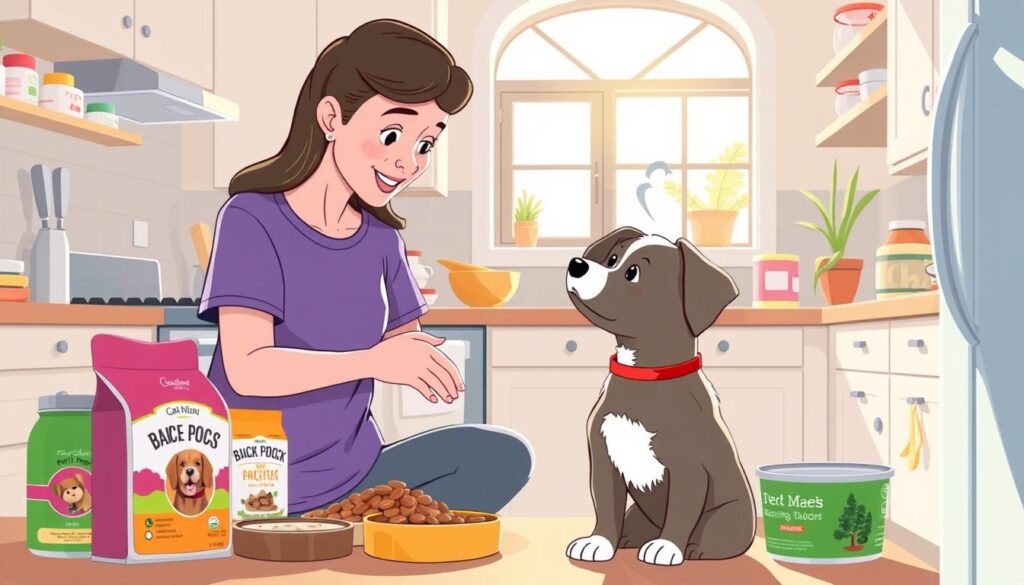
Choosing the right commercial pet food for your sedentary companion involves understanding their nutritional needs. Inactive pets require a diet that balances reduced calories with adequate nutrition to prevent deficiencies. Commercial pet foods that meet AAFCO standards for complete and balanced nutrition are a good starting point.
Decoding Pet Food Labels for Nutritional Content
Understanding pet food labels is crucial for making informed decisions. Look for foods that are labeled as "complete and balanced" by meeting AAFCO standards. The label should list the ingredients, nutritional content, and feeding guidelines. Be aware of misleading marketing terms like "natural" or "holistic," which don't necessarily mean the food is suitable for your inactive pet.
Some reputable brands that meet these standards include Hill's, Purina, and Iams. When evaluating pet food, consider the type of protein sources, carbohydrate content, and the presence of essential vitamins and minerals.
Specialized Formulas for Weight Management
Specialized weight management formulas are designed for pets with lower energy requirements. These diets are typically lower in calories but still provide essential nutrients. "Light" or "reduced calorie" pet foods can be a good option, but it's essential to consult with your veterinarian to determine the best choice for your pet.
Diets for dogs with diabetes, for example, are often formulated to be low in simple sugars but contain polysaccharides and fiber to prevent spikes in glucose levels. When transitioning to a new diet, do so gradually to prevent digestive upset, and monitor your pet's health under veterinary guidance.
Diet for Inactive Pets: Special Considerations by Life Stage
As pets age or become less active, their dietary needs change significantly. It's essential to understand these changes to provide the best possible care for your pet. The nutritional requirements of pets vary not only based on their activity level but also on their life stage.
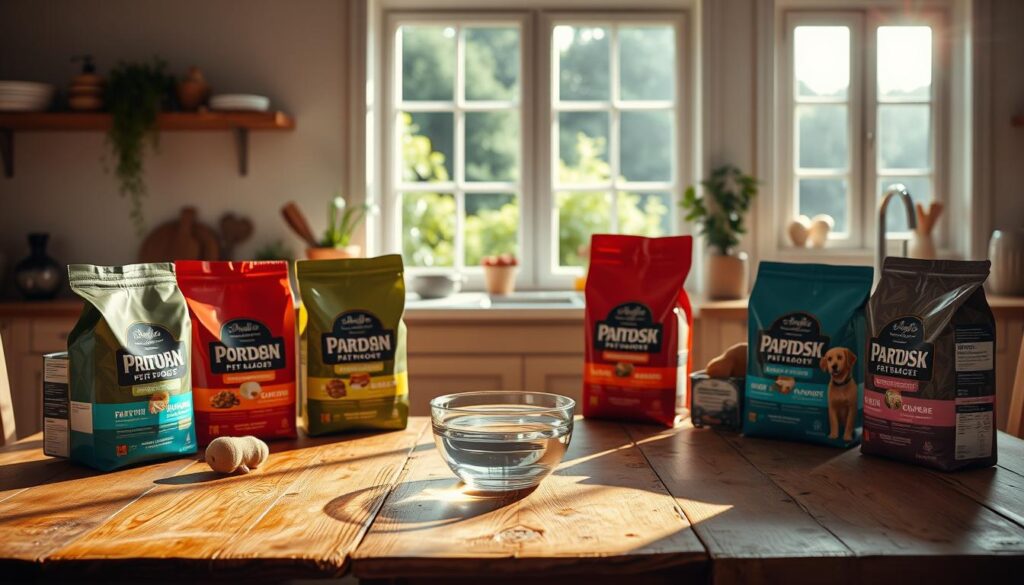
Nutritional Needs of Senior Low-Activity Pets
Senior pets often require a diet that is tailored to their aging bodies. As pets age, their metabolism slows down, and they may become less active. This means they require fewer calories but still need a balanced intake of essential nutrients. Senior pet diets should be rich in antioxidants, omega-3 fatty acids, and fiber to support joint health and digestion. Additionally, senior pets may benefit from diets that are formulated to support cognitive function and manage age-related health issues.
| Nutrient | Importance for Senior Pets |
|---|---|
| Antioxidants | Supports overall health and reduces oxidative stress |
| Omega-3 Fatty Acids | Promotes healthy skin, coat, and joint health |
| High-Quality Protein | Maintains muscle mass and overall health |
Feeding Adult Pets with Reduced Energy Requirements
Adult pets with reduced energy requirements need a diet that matches their lower activity level. This doesn't mean reducing the quality of their diet, but rather adjusting the quantity and composition to meet their new energy needs. For adult pets, it's crucial to maintain a balance between calorie intake and energy expenditure to prevent weight gain or loss. Feeding strategies may include portion control, switching to a lower-calorie food, and optimizing meal frequency to keep your pet satisfied and healthy.
"The key to managing your pet's diet is understanding their individual needs and adjusting their nutrition accordingly."
By considering the life stage and activity level of your pet, you can make informed decisions about their diet to ensure they lead a healthy and happy life.
Feeding Strategies for Indoor Cats
To keep your indoor cat healthy, it's essential to adopt effective feeding strategies that cater to their specific needs. Indoor cats often lead sedentary lifestyles, which can lead to weight gain and obesity if their diet is not carefully managed.
Preventing Obesity in Apartment Cats
Preventing obesity in indoor cats involves a combination of dietary adjustments and lifestyle changes. Since indoor cats are less active, they require fewer calories. However, it's crucial to ensure they're getting the right balance of nutrients.
One effective way to manage your cat's weight is by controlling their food intake. Cats usually do well with two meals per day, but some may prefer more frequent, smaller meals. Ensuring that portion sizes are tailored to your cat's specific needs can help prevent obesity and promote optimal health.
Portion control is key. Using a measuring cup to measure your cat's food can help prevent overfeeding. Additionally, considering the use of automatic feeders or puzzle feeders can help control portions while providing mental stimulation.
| Feeding Method | Benefits | Considerations |
|---|---|---|
| Measured Meals | Helps control weight, reduces waste | Requires discipline, can be time-consuming |
| Automatic Feeders | Convenient, allows for scheduled feeding | Initial investment, potential for technical issues |
| Puzzle Feeders | Provides mental stimulation, slows down eating | May not be suitable for all cats, requires introduction period |
Meal Frequency and Portion Control Techniques
Adjusting meal frequency and portion sizes based on your cat's individual response is crucial. Rather than just following package guidelines, observe your cat's weight, overall health, and activity level to determine the ideal feeding schedule.
For cats that graze throughout the day, transitioning to scheduled meals can be challenging. It's essential to introduce changes gradually to avoid stress or behavioral problems.
Monitoring your cat's intake and adjusting as necessary is key to maintaining their health. Regular check-ups with your veterinarian can also provide valuable insights into your cat's nutritional needs.
Nutrition for Dogs with Limited Exercise Opportunities
For dogs with mobility issues, a well-planned diet is essential for overall well-being. When a dog's activity level decreases, their nutritional needs change, and it's crucial to adjust their diet accordingly. A balanced diet can help manage weight, reduce inflammation, and maintain overall health.
Dietary Adjustments for Breeds Prone to Weight Gain
Some dog breeds are more prone to weight gain due to their genetic makeup. For these breeds, it's essential to monitor their food intake closely and make dietary adjustments as needed. Feeding a high-protein, moderate-fat diet can help maintain muscle mass while controlling weight. Additionally, incorporating omega-3 fatty acids can help reduce inflammation and promote overall health.
| Breed | Prone to Weight Gain | Dietary Recommendations |
|---|---|---|
| Labrador Retriever | Yes | High-protein, moderate-fat diet |
| German Shepherd | Moderate | Balanced diet with controlled calorie intake |
| Bulldog | Yes | Low-calorie, high-fiber diet |
Feeding Plans for Dogs with Mobility Issues
Dogs with mobility issues require a feeding plan that accommodates their physical limitations. Elevated feeding stations can help reduce strain on the dog's neck and joints. Additionally, smaller, more frequent meals can help manage their nutritional needs while minimizing discomfort. It's also essential to monitor their weight and adjust their diet accordingly to prevent obesity-related complications.
By making these dietary adjustments and incorporating anti-inflammatory nutrients like omega-3 fatty acids, you can help your dog maintain a healthy weight and reduce the risk of mobility-related health issues.
Common Health Issues Related to Diet in Inactive Pets
Pets with low activity levels often face diet-related health issues that can be mitigated with proper nutritional planning. Inactive pets are more susceptible to various health conditions due to their sedentary lifestyle and dietary habits.
Recognizing and Preventing Obesity
Obesity is a significant health issue in inactive pets, leading to a range of secondary conditions such as diabetes, arthritis, and heart disease. Recognizing the signs of obesity early is crucial. You can help prevent obesity by managing your pet's diet and ensuring they get adequate, though not excessive, physical activity. A balanced diet with appropriate calorie intake is essential for maintaining a healthy weight.
For instance, a weight management plan for your dog might involve switching to a lower-calorie food and increasing their daily activity through short walks or playtime. For cats, it's about monitoring food portions and encouraging more active behavior.
| Health Issue | Dietary Adjustment | Benefit |
|---|---|---|
| Obesity | Lower-calorie diet | Weight loss, reduced risk of secondary conditions |
| Diabetes | Balanced carbohydrate intake | Better blood sugar control |
| Urinary Tract Disease | Increased water intake, specific nutrient balance | Reduced risk of urinary tract issues |
Managing Diet-Related Conditions in Sedentary Pets
Sedentary pets are at a higher risk for diet-related conditions such as diabetes, urinary tract disease, and constipation. Managing these conditions involves specific dietary adjustments. For example, pets with diabetes require a diet that helps regulate blood sugar levels, while those prone to urinary tract issues may benefit from a diet that promotes urinary health.
Low-protein diets may be recommended for certain conditions, such as chronic kidney disease, to decrease the amount of ammonia in the body, which is toxic to tissues and cells. Working with your veterinarian to develop a nutritional plan tailored to your pet's specific health challenges is crucial.
By understanding the link between diet and health issues in inactive pets, you can take proactive steps to manage their nutritional needs and prevent or mitigate these conditions.
Transitioning to a Lower-Calorie Diet Safely
A well-managed transition to a lower-calorie diet is vital for the health and comfort of your less active pet. When pets become less active, their dietary needs change, and it's essential to adjust their food intake accordingly to prevent weight gain and associated health issues.
Gradual Food Changes to Prevent Digestive Upset
To avoid digestive upset, it's crucial to introduce the new, lower-calorie food gradually. Start by mixing a small amount of the new food with their current diet and gradually increase the proportion over a period of 7-10 days. This gradual transition helps your pet's digestive system adjust to the new food, reducing the risk of gastrointestinal issues.
Monitoring Health During Dietary Transitions
During the transition, it's essential to monitor your pet's health closely. Keep track of their weight, energy levels, coat condition, and stool quality. Any significant changes, such as lethargy, diarrhea, or loss of appetite, should be noted and discussed with your veterinarian. Maintaining a simple health journal can help identify patterns and concerns early on, allowing for timely adjustments to the diet plan.
| Health Parameter | Normal Changes | Red Flags |
|---|---|---|
| Weight | Gradual weight loss or stabilization | Rapid weight loss or gain |
| Energy Levels | Stable or slightly increased energy | Significant lethargy or hyperactivity |
| Coat Condition | Improved shine and texture | Dullness, excessive shedding, or skin issues |
| Stool Quality | Firm, consistent stools | Diarrhea, constipation, or blood in stool |
By carefully managing the transition to a lower-calorie diet and monitoring your pet's health, you can help ensure their continued comfort and well-being.
Creating a Balanced Homemade Diet for Low-Activity Pets
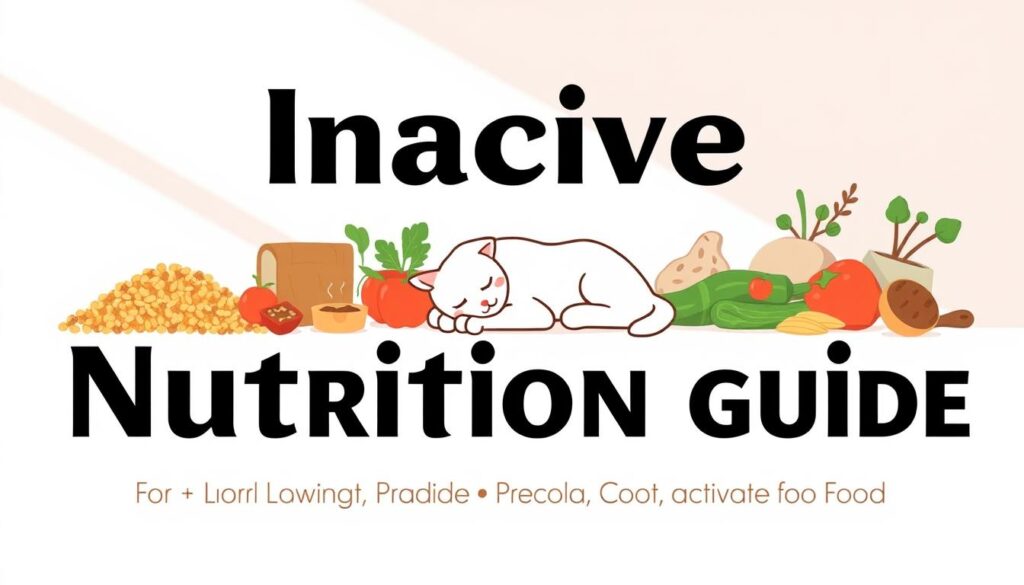
If you're considering a homemade diet for your inactive pet, it's essential to understand the importance of balancing their nutrient intake. A well-balanced homemade diet can help maintain your pet's overall health, particularly for those with limited activity levels.
Safe Ingredients and Proper Nutrient Ratios
When formulating a homemade diet for your low-activity pet, it's crucial to select safe ingredients and achieve the right nutrient ratios. This involves understanding the nutritional requirements of your pet and choosing ingredients that meet those needs without causing harm.
Nutritional Requirements: Inactive pets require a diet rich in essential nutrients but lower in calories to prevent obesity. Ensuring the right balance of protein, fat, carbohydrates, vitamins, and minerals is vital.
Safe Ingredients: Choose fresh, whole foods that are safe for consumption by pets. Avoid ingredients that are toxic to pets, such as onions, garlic, and chocolate.
Working with a Veterinary Nutritionist
Consulting with a board-certified veterinary nutritionist is highly recommended when creating a homemade diet for your low-activity pet. These professionals have the expertise to formulate a diet that meets your pet's specific nutritional needs.
Benefits of Consulting a Veterinary Nutritionist: They can help prevent nutritional deficiencies, ensure the diet is well-balanced, and provide guidance on making adjustments as needed.
You can find a veterinary nutritionist through professional organizations like the American College of Veterinary Nutrition (ACVN). They can provide resources and directories to help you locate a certified professional in your area.
Conclusion: Maintaining Optimal Health Through Proper Nutrition
The importance of proper nutrition for low-activity pets cannot be overstated, as it directly impacts their quality of life. A balanced diet provides essential nutrients that contribute to strong immune systems, healthy weight management, improved energy levels, and better digestion for pets.
As you've learned, proper nutrition forms the foundation of health for inactive pets despite their reduced energy expenditure. By understanding the key principles of feeding low-activity pets, including appropriate calorie restriction while maintaining nutrient density, you can make informed decisions about your pet's food.
Creating a sustainable long-term feeding plan that adapts to your pet's changing needs throughout their life is crucial. Regular veterinary check-ups play a vital role in monitoring your inactive pet's health and adjusting their diet as needed. This proactive approach can help prevent certain health conditions and promote longevity in your dog or pet.
By investing extra effort in optimizing your pet's nutrition, you can lead to improved quality of life and potentially reduced veterinary costs over time. It's also important to be aware of potential deficiencies in your pet's diet and work with your veterinarian to address them.
In conclusion, maintaining optimal health through proper nutrition is a multifaceted approach that involves understanding your pet's specific needs, choosing the right food, and regularly monitoring their health. By following these guidelines, you can help ensure your low-activity pet leads a happy, healthy life.

Leave a Reply